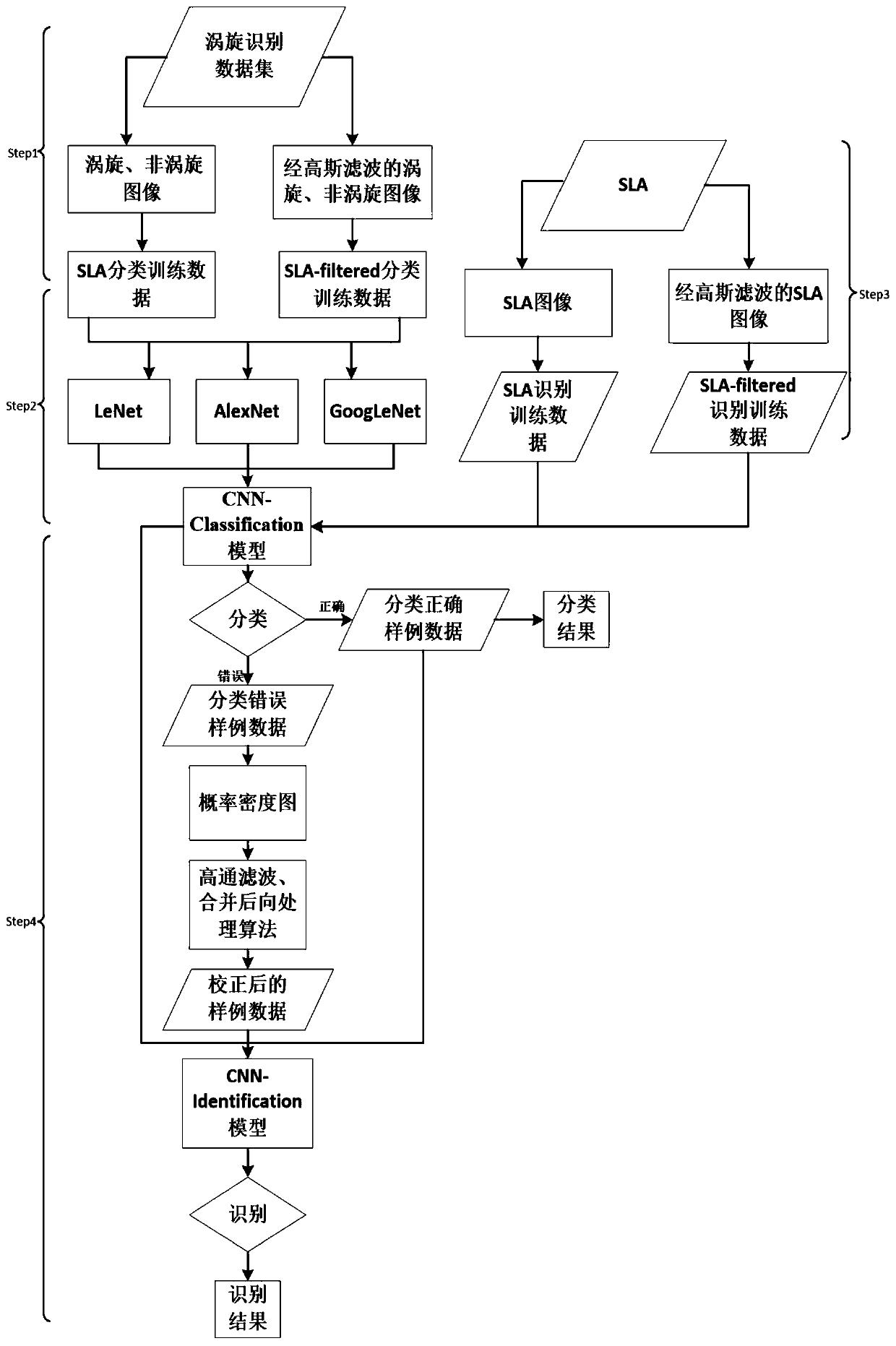Marine mesoscale vortex classification recognition method based on deep learning
A deep learning, classification and recognition technology, applied in character and pattern recognition, instruments, computer parts, etc., can solve the problems of noise impact, no threshold, large amount of calculation, etc., to ensure independence and ensure that the vortex does not miss the recognition , to ensure the effect of richness
- Summary
- Abstract
- Description
- Claims
- Application Information
AI Technical Summary
Problems solved by technology
Method used
Image
Examples
Embodiment Construction
[0036] In order to achieve efficient classification and identification of mesoscale vortices, the specific data organization and model construction strategies are described in detail below:
[0037] A method for classifying and identifying marine mesoscale eddies based on deep learning, comprising the following steps:
[0038] 1. Build the training data of the classification model
[0039] 1. Using the classic mesoscale vortex identification algorithm based on SLA closed contours to identify global mesoscale vortexes and establish a multi-year mesoscale vortex identification data set;
[0040] 2. According to the position of the mesoscale vortex identified every day, in the global SLA data, the cyclone, anticyclone and non-vortex data are extracted according to the uniform 9×9 pixel size, and the loss is reduced and stored as image data;
[0041] 3. Segment the extracted images according to 70%, 20%, and 10% of the time series to form training data sets, test data sets, and v...
PUM
 Login to View More
Login to View More Abstract
Description
Claims
Application Information
 Login to View More
Login to View More - R&D
- Intellectual Property
- Life Sciences
- Materials
- Tech Scout
- Unparalleled Data Quality
- Higher Quality Content
- 60% Fewer Hallucinations
Browse by: Latest US Patents, China's latest patents, Technical Efficacy Thesaurus, Application Domain, Technology Topic, Popular Technical Reports.
© 2025 PatSnap. All rights reserved.Legal|Privacy policy|Modern Slavery Act Transparency Statement|Sitemap|About US| Contact US: help@patsnap.com

